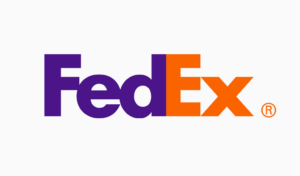508 PDF Compliance
508 Criteria:1.1.1 WCAG 2D-2G
2D – Images of, or that include text (ex. logos), have the text as part of the description.
2E – Embedded multimedia is identified via accessible text.
2F – Animated content has an alternative or is described in text.
2G – Mathematical formulas have an alternatives or are provided as text.
Why it Matters
2D – In order to achieve 508 PDF Compliance it is important to have alternate text for every image to make it easy for search engines and people with visual impairment to understand the context of the image. Images of text display stylized readable text. It isn’t a user-friendly practice for visually impaired people, usually relying on screen text readers. Text is far more flexible than textual images, because it has clarity and does not pixelate when resized.
A good rule of thumb for 508 PDF Compliance is to avoid images with large amounts of text. However, in scenarios where it is important for an image to be displayed as a text, the alternate text should have the same contents as shown in the image.
Below are 2 examples that explain the concept of text used in images. Here’s one of a logo with text – the logo of FedEx, a renowned logistics company. Since the logo has text, the alternative text should have the same text as the one shown in the logo. The alt text could be: LOGO OF FEDEX COMPANY

Another example could be a short snippet or quote that has text, such as:

The alternative text for this image should have the displayed text as part of it, such as:
An image showing YOUR ACCESS TO THE CITY
Or
A logo displaying text YOUR ACCESS TO THE CITY
2E – This is more than just having an alternative text for multimedia. The purpose of multimedia is to make a PDF document more appealing by accompanying audio and/or video. But some people are either visually impaired or have difficulties in hearing.
What you need to do for 508 PDF Compliance is have a complete text transcript for the embedded or time-based multimedia in your document. This is important for two reasons.
- It is easier for people who have no visual impairment problems to simply scan through the text.
- People with visual impairments will be able to read and understand the context of the video through a screen reader program such as Braille.
2F – The same rule applies to animated content and to achieve 508 PDF Compliance. If the animated content is in GIF format, you need to follow the same steps as in for 1.1.1 2E. If it is in another format, you need the following:
- An accompanying long textual description of the animation
- An accompanying audio link or embedded audio in the animation
2G – Mathematics is an area with a number of challenges that still need to be addressed. We will address some of those as mandatory for the PDF Section 508 compliance.
Mathematical formulas are free for public use and can be distributed in any educational context. While the formulas have no copyrights, beware of the accompanying images, charts and diagrams. You need to take permission from the copyright owner to use the mathematical charts and then proceed with alt texts.
There are two languages in which mathematical formulas are coded, MathML and LateX.
For mathematical formulas, it is important to have text alternatives providing a short description of what the formula is, and its purpose.
Digital Echo works with forward thinking organizations on inclusion and accessibility for those with disabilities. For a deeper conversation on how to best support your users or to see our PDF Accessibility Services contact us at info@digitalecho.io

Comments are closed.